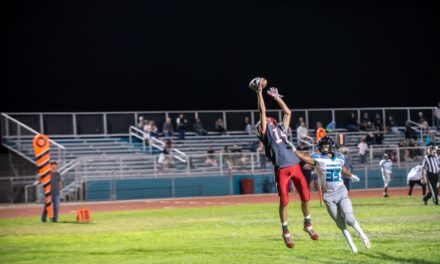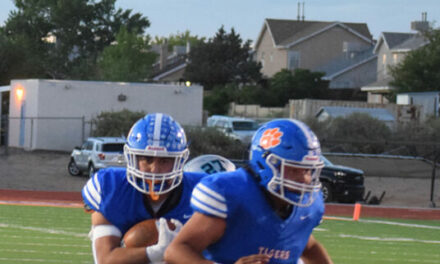(Editor’s note: Marvin Johnson is a former UNM Lobo basketball player who currently serves as director of Southwest Basketball Camps. This is the second in a series of articles he’s written offering tips to young players)
Last time, we talked about the triple-threat position. Whenever you have the ball in the front court, you should assume this position. From the triple-threat position, you can drive to the hoop, make a pass or shoot a jump shot — that’s why it’s called the triple threat.
Now we’re going to talk about each of these three options, starting with dribbling. Last time, we talked about the importance of a quick first step. It will allow you to beat your defender instantly. You’ll use this lunging first step when you start your dribble.
There are two types of dribbling techniques: a protected dribble and a speed dribble.
A protected dribble is used when a defender is closely guarding you, which will be about 95 percent of the time in a game situation. The speed dribble is used when you are in front of most or all of the defenders and you want to advance the basketball up the court as quickly as possible.
In order to become a good dribbler and be effective, you must learn to dribble the basketball without looking down at it. The person dribbling the basketball must keep their head up so they can see what’s happening from both the defensive and offensive perspectives. Equally important is learning to dribble with both your left and right hands.
I advise all guards, centers and forwards to learn to dribble the basketball — mastering the fundamentals regardless of how tall or short you are. In fact, it should be a primary goal to learn to dribble well in order to become a complete player.
When dribbling the basketball, always keep your body between the ball and the defender. With a protected dribble, you should crouch low as though you’re sitting in a chair. Your feet should be about shoulder-width apart and the weight of your body should be on the balls of your feet.
If you’re dribbling with your right hand, the basketball should be dribbled behind your right leg, not higher than knee level. The left hand should be held just a little bit below shoulder height with the elbow bent at a 45 degree angle. This is important, so the defender can’t reach in to steal the ball from you.
Your fingers should be spread and slightly rounded off so the basketball doesn’t touch the palm of your hand. If you are dribbling with your left hand, everything I just said should be reversed.
Once you’ve learned to dribble in a straight line, you must quickly learn to change direction. There are three basic change of direction moves you should learn: the crossover, behind the back and between the legs.
The speed dribble is slightly different from the protected dribble. You still should keep your body between the defender and the ball. With the speed dribble, you push the ball out in front of you and catch up to it, push out in front and catch up. You keep repeating this until you reach your destination on the floor. As you get into the lane area, you want to slow down and get yourself under control — get more into a protected dribble mode, unless you are going all the way to the hoop.
Practice your dribbling, both the protected dribble and the speed dribble. Next time, we’ll talk about another option from the triple threat — passing.
















